This blog is about the literary analysis of “The Yellow Wallpaper,” a short story by Charlotte Perkins Gilman, 1892 – Analaysis, Overview with Theme Summary.

Storytime and ‘The Yellow Wallpaper’ Analysis
About a week ago, my sister showed me her college essay project on the early feminist era and the contributions of various women to the movement. The discussion was fascinating as we explored how women broke the chains of oppression through their art and feminist writings.
She grabbed her iPad and showed me her favourite book on feminism, The Yellow Wallpaper. At first, I laughed—how could a book with that name be a feminist work? (Yeah, I know, I shouldn’t have laughed; of course, it could be. But come on, doesn’t it sound more like a guide for interior designers?)
She said she liked the simple plot of The Yellow Wallpaper. Still, the theme is based on psychological horror and majorly on feminism (as per her research), so, she was still confused about how to write its essay analysis. According to her, the story’s plot doesn’t explicitly mention “feminism,” so she wasn’t sure how to approach it. Since she’s not so literature-girly, she asked for my help in understanding the actual concept and themes behind the story.
My Experience with the Short Story, ‘The Yellow Wallpaper’
At first, when I read the story, I also didn’t find anything “particularly unique” or special about it. If I’m being honest, it felt like an average horror story, and there didn’t seem to be anything explicitly feminist about it.
UNTIL
I started researching…
My jaw was on the ground as I kept uncovering fact after fact about this short story. The deeper I dug, the more I realized how brilliantly written it was. By the time I finished my research, I had to sit and process everything for a while like ✨wow✨. It’s truly a masterpiece— the way it conveys feminist themes through psychological horror and its symbolism and writing style is nothing short of genius.
I also researched the author of this short story, Charlotte Perkins Gilman, and discovered the connection between her own life and the story, The Yellow Wallpaper. That left me even more astonished at how impressive of a writer she was.
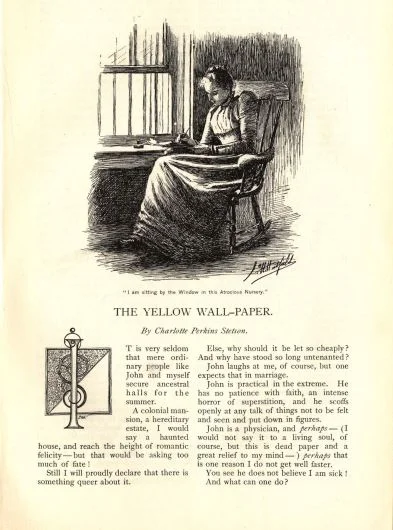

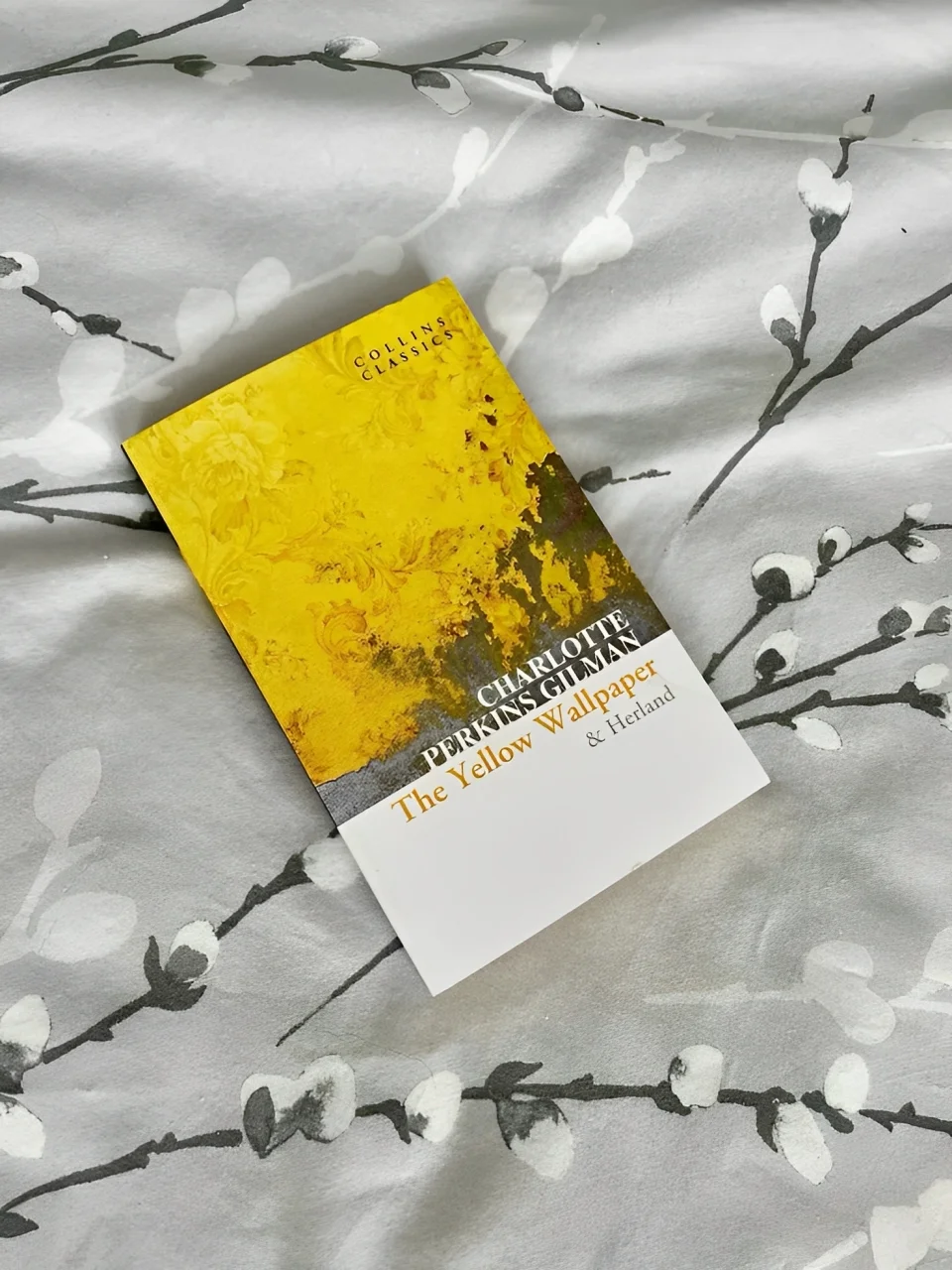
Before we go any further, here’s a quick NOTE: This blog contains major spoilers for The Yellow Wallpaper. If you haven’t read the story yet and want to avoid spoilers, I recommend reading this, The Yellow Wallpaper Analysis only if you’re okay with it!
This blog on The Yellow Wallpaper Analysis follows:
- About the Author
- Summary of a Short Story
- Writing Style & Impact
- Interpretation of its Symbolism
- Analyzation of Themes
- Historical & Social Context
- My Recommendation and Rating
Charlotte Perkins Gilman, The Writer of ‘The Yellow Wallpaper’
The Yellow Wallpaper was written by Charlotte Perkins Gilman and published in 1892 in The New England Magazine. Charlotte was an American writer and novelist who was born in 1860, in Connecticut, United States. She was a utopian feminist and devotedly worked for feminist movements in the late 19th century. Served as a role model for future generations of feminists with her unorthodox concepts and lifestyle.
Her work primarily focused on gender issues, particularly the division of labour in society and the challenges of male dominance. She was later honoured with induction into the National Women’s Hall of Fame.

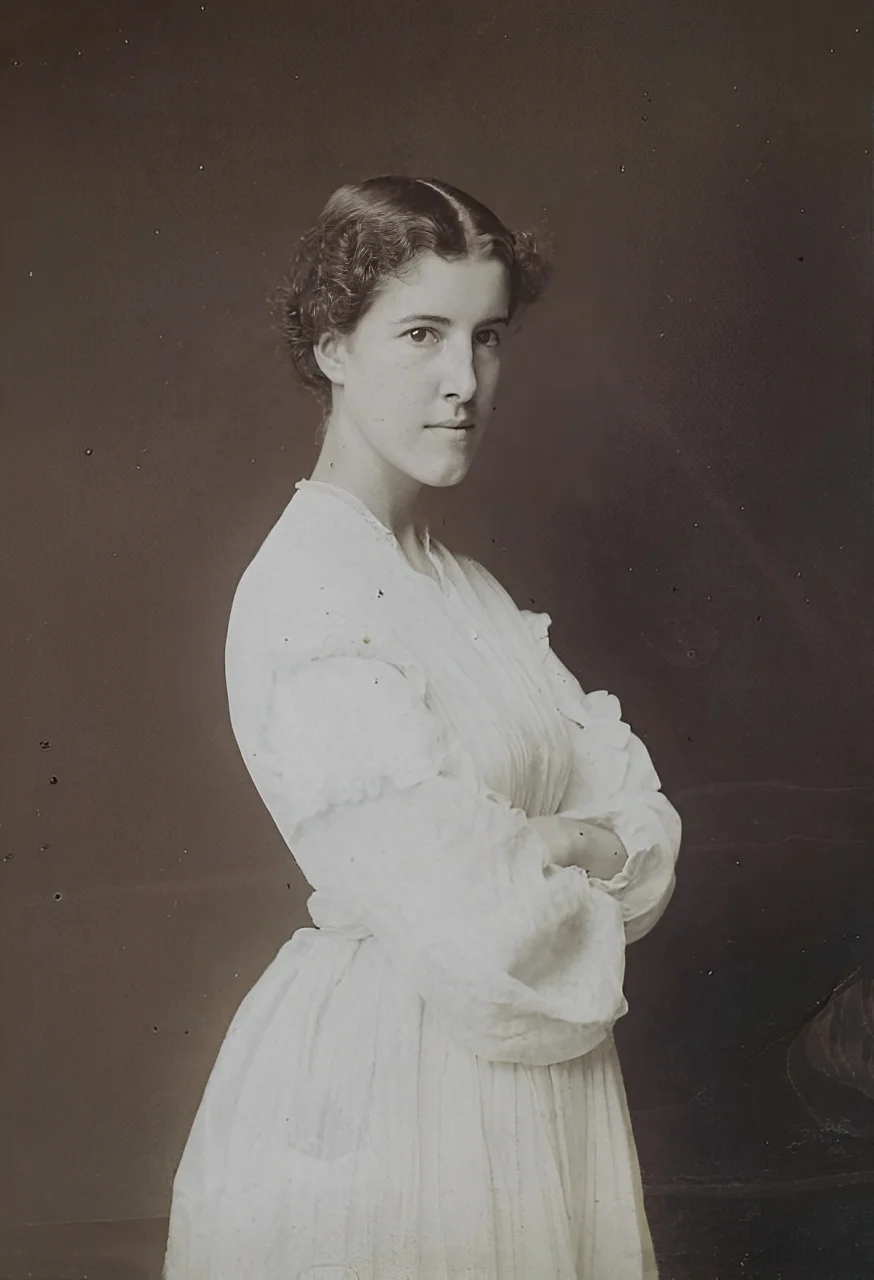
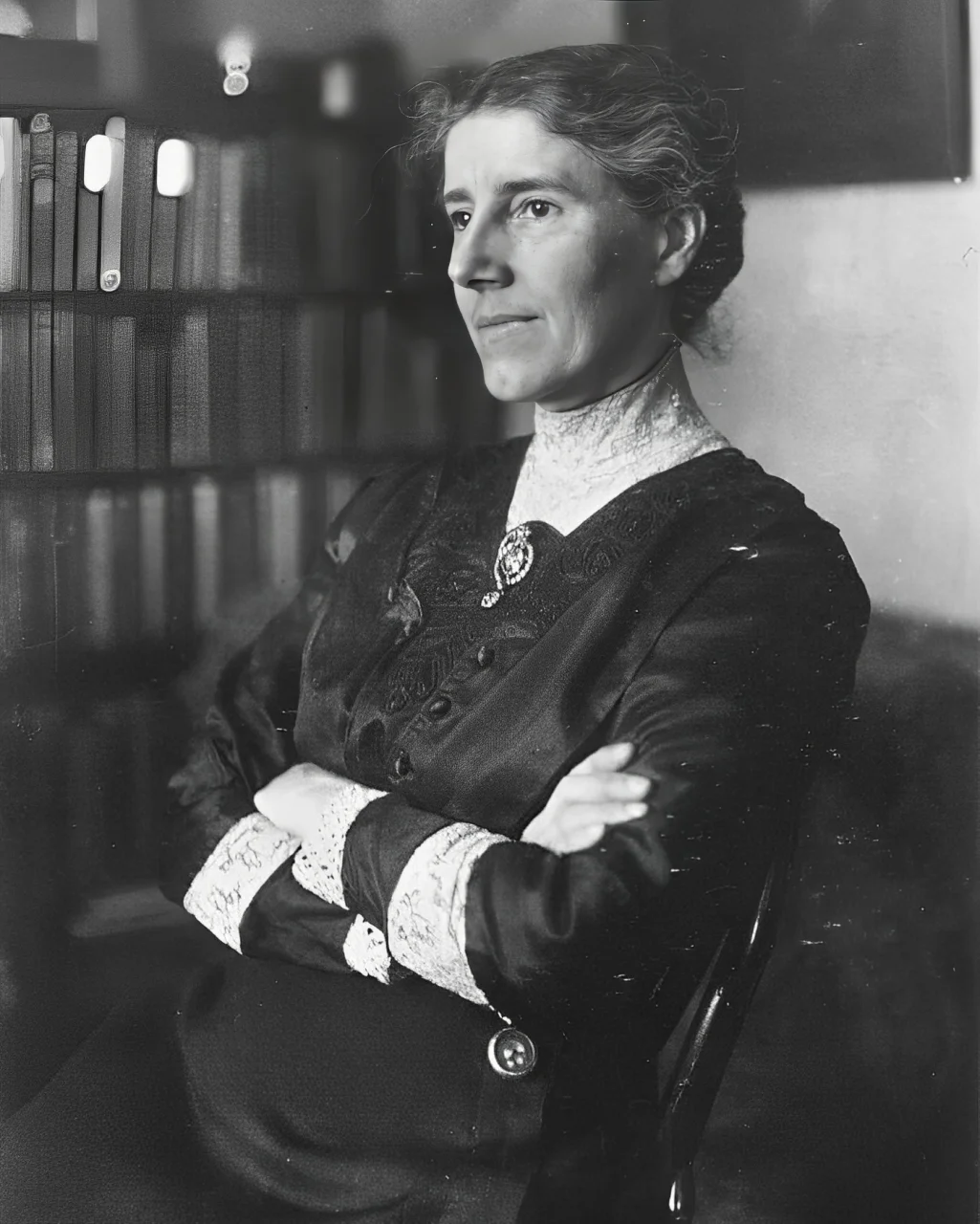
I’ll discuss her life events in different parts with more context but if you are curious to know more about Charlotte Perkins Gilman, you can read about her on Wikipedia.
Summary of a Short Story ‘The Yellow Wallpaper’
A Colonial Mansion
The story starts with a couple, the narrator and her husband, John, who rent a beautiful yet secluded hereditary mansion for the summer. The narrator, Jane a young woman suffering from postpartum depression, is prescribed rest therapy by her physician husband John, believing it will help her recover from what he calls a “temporary nervous depression.” and insists Jane relies only on good food and bed rest.
Rest Cure Treatment
Jane was already suspicious about the mansion and later she felt trapped as John told her not to worry, not to think too much, even not to write—just rest. Her prescribed treatment, known as the “rest cure,” demands that she avoid nearly all forms of activity. However, she strongly believes that staying active, enjoying freedom, and engaging in stimulating work would improve her condition. But her husband dismissed her every concern saying he knows better as a doctor, so she had to obey him.
A Secret Journal
To ease her mind, she secretly keeps a journal. As she continues her entries, she describes the house and its gardens—once beautiful but now bearing the marks of years of neglect. In the nursery on the top floor. It was a peculiar and absurd big room. Once a nursery, with heavy bars on the windows and rings bolted into the walls, as if meant to restrain something—or someone. The floor was scratched, and the furniture worn, but it was the wallpaper that disturbed Jane the most.
The Yellow Wallpaper on the Wall
A repellant, sickly yellow, faded in places and peeling in others, it seems to shift when she’s not looking. She described the yellow wallpaper as “dull enough to confuse the eye in following, pronounced enough to constantly irritate.” The tangled patterns form strange, twisting shapes, almost like something off is trapped within them.
At first, she tells herself it’s just her imagination. She mustn’t let her mind wander. But as the days pass, she can’t shake the feeling that she isn’t alone in the room. Something lurks behind the wallpaper. Watching. Waiting.
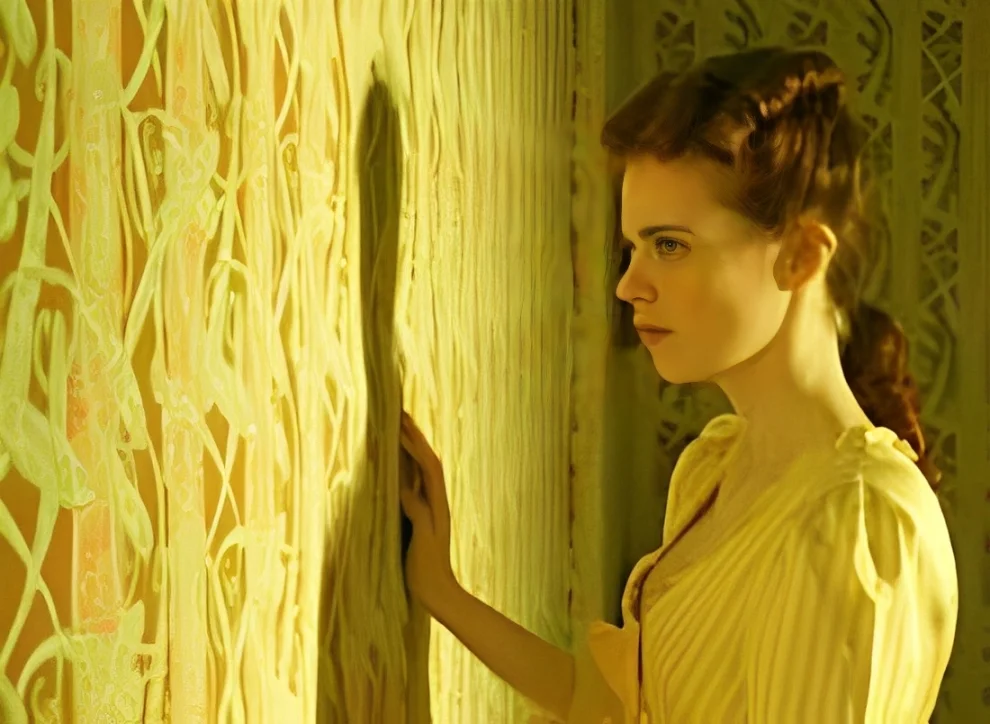
Disregarded The Concern
She discussed this matter with her husband but he dismissed her concerns assuming that it’s all her hallucinations and nothing is fascinating and worried about the room and its wallpaper. Also, he told her that they couldn’t renovate the house for a few weeks.
Jane starts seeing movement, just a flicker at first—a shadow shifting beneath the curling edges. At night, when the moonlight hits just right, she swears she can make out a figure. A figure. Crawling. Trapped.
Threat of ‘Weir Mitchell’
As July Fourth passes, Jane notes that her family has just visited, John threatens to send her to Weir Mitchell because she got more exhausted after just her family visited her. Left alone most of the time, Jane finds herself growing strangely fond of the wallpaper. Studying its pattern and flows became her primary source of distraction and entertainment. As her fixation deepens, she begins to discern a sub-pattern within it—one that resembles a woman “stooping down and creeping” behind the main pattern design, which, in the darkness of the night, appears like the bars of a cage. Before long, the wallpaper consumes her thoughts entirely. Mistaking her quiet obsession for improvement, John believes she is getting better. In reality, however, she is sleeping less and becomes convinced that she started even to smell the wallpaper’s scent throughout the room.
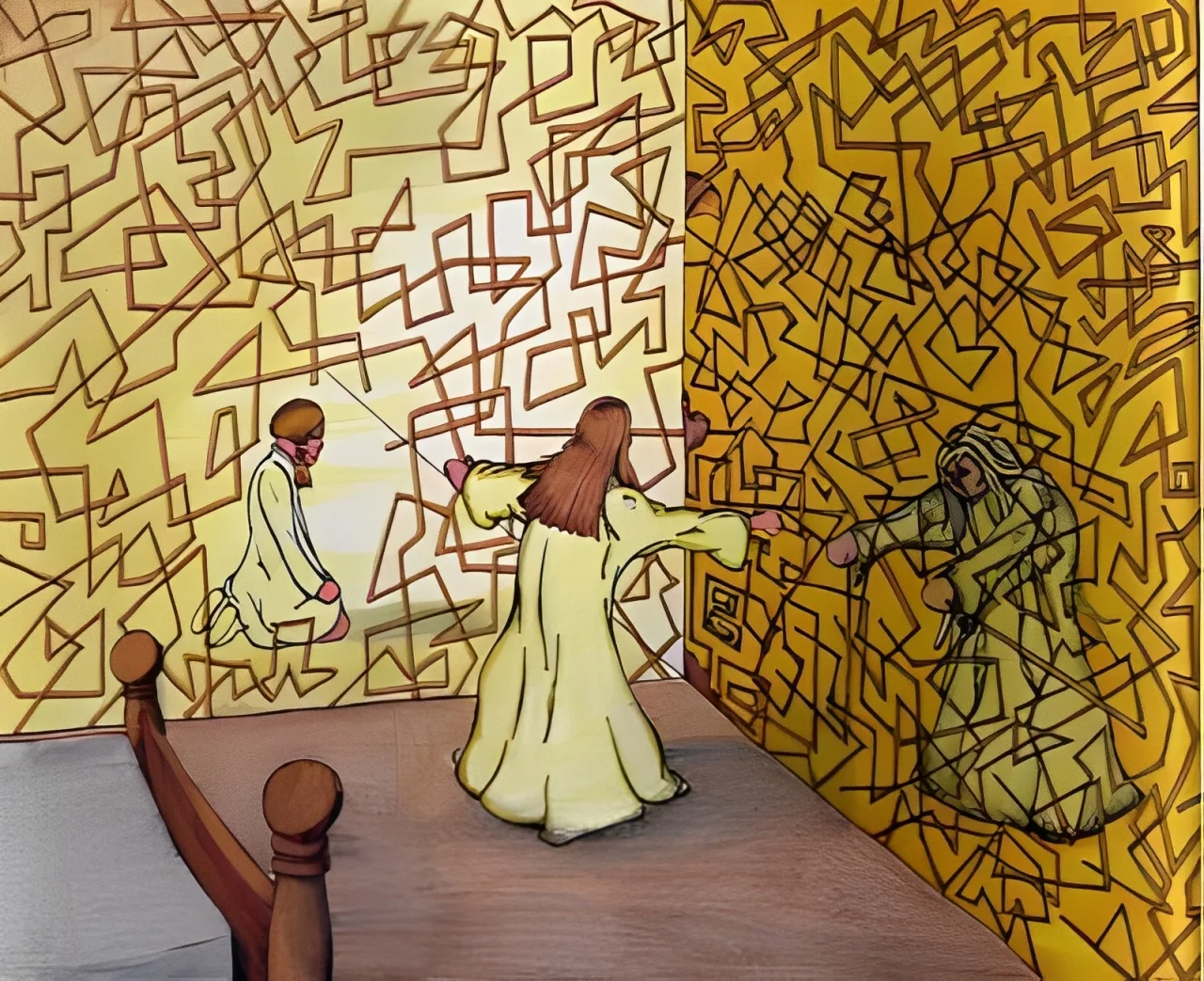
The sub-pattern now unmistakably resembles a trapped woman struggling to break free. She watches as the woman shakes the bars at night and creeps around during the day when she appears to have momentarily escaped the confines of the queer wall.
The End of Story – The Yellow Wallpaper
By the end, her obsession grows and she locks herself in the room and begins peeling off the yellow wallpaper to free the trapped woman, creeping around its perimeter, declaring that she has finally broken free. When John breaks the locked door of a room and discovers her in this state, he faints, and she continues creeping over his unconscious body, completely consumed by madness.
Writing Style & Impact
Charlotte Perkins Gilman’s The Yellow Wallpaper is a powerful critique of the restrictive treatment of women’s mental health in the 19th century, highlighting themes of oppression, gender roles, and psychological deterioration.
The Selection of a Narrator | The Three Reasons
I actually admire how Gilman used first-person narrative to tell the story because of course, the first reason was the protagonist was indirectly not allowed to even share what she was feeling. Put on bed rest with scheduled isolation where she can’t see her husband, friends, or newborn.
The second reason is we experience the narrator’s thoughts and interactions through this secret diary that she uses to write in. So basically, nobody heard and nobody knows.
The third reason is the most inciting as Charlotte Gilman knows that using other narratives wouldn’t help readers to actually understand the depths of the story’s emotions and that’s important. If you try to express this from a third person, we’d have too much separation and objective perceptions that would make it seem like she’s crazy or having mental issues, hallucinations and stuff. When you’re in HER eyes and experiencing the trauma, I think you can feel a lot more for HER in terms of the stress that she’s going through.
The Storytelling Tone Used In a Story
The most astonishing fact about the storytelling tone of The Yellow Wallpaper is that I got my answer in like 2 paragraphs or so ‘How it’s a feminism-based book?’ I have read many books on feminism but such a tone, I’ve never experienced. The story starts as:
Still, I will proudly declare that there is something queer about it. Otherwise, why should it be let so cheaply? And why have stood so long untenanted? John laughs at me, of course, but one expects that in marriage.
The Yellow Wallpaper
The selection of words and the tone of narration describe the theme and message without even fully expressing it.
You see he does not believe I am sick! And what can one do? If a physician of high standing, and one’s own husband, assures friends and relatives that there is really nothing the matter with one but temporary nervous depression – a slight hysterical tendency – what is one to do? My brother is also a physician, and also of high standing, and he says the same thing.
The Yellow Wallpaper
As we readers know from the context, Jane was psychologically chained to agree with what his husband was saying. It’s really an impressive example of a ‘show, don’t tell’ writing technique.
Having Elements Such as Gaslighting and Emotional Oppression
Charlotte Gilman also uses indirect hidden emotional gameplay and gaslighting effects to highlight the message of oppression more. You’ll notice throughout the entire story that the narrator is gaslighted by her husband, John, in ways that subtly erode her confidence, independence, and perception of reality.
From the beginning, John invalidates the narrator’s feelings and symptoms. He insists she is merely suffering from “temporary nervous depression” rather than a real mental illness.
The Yellow Wallpaper
You see, he does not believe I am sick! And what can one do?
The Yellow Wallpaper
I sometimes fancy that in my condition if I had less opposition and more. Society and stimulus – but John says the very worst thing I can do is to think about my condition, and I confess it always makes me feel bad.
The Yellow Wallpaper
Logical and Emotional Oppression
The fun writing element that shocked me the most is that the story is narrated entirely from a first-person perspective. However, even in her journal—which is meant to reflect her ‘inner thoughts and emotions’—she frequently quotes her husband. Instead of expressing her own perspective, she uses his exact words to tell the story.
Essentially, replaces her own thoughts with his, even in a space that should be deeply personal. This suggests that he has embedded himself so deeply into her psyche that she no longer fully owns her thoughts. If this is the case, it indicates a significant level of control over her.
I wouldn’t say this is the most definitive example of gaslighting, but it does bring it to mind. He constantly tells her things and she unquestioningly adopts his perspective—accepting it as truth.
“But John says if I feel so, I shall neglect proper self-control; so I take pains to control myself before him, at least, and that makes me very tired”
The Yellow Wallpaper
There is a beautiful shaded lane that runs down there from the house. I always fancy I see people walking in these numerous paths and arbors, but John has cautioned me not to give way to fancy in the least.
The Yellow Wallpaper
I sometimes fancy that in my condition if I had less opposition and more society and stimulus – but John says the very worst thing I can do is to think about my condition, and I confess it always makes me feel bad.
The Yellow Wallpaper
As readers, especially in today’s context, we’re encouraged to recognize this dynamic and its troubling implications. Interpretation of Its Symbolism | What Does ‘The Yellow Wallpaper’ Symbolize?
The Rental Colonial Mansion – First Symbol in The Yellow Wallpaper
Here, we get a strong sense of separation from the description of the house. Stated as:
The most beautiful place! It is quite alone, standing well back from the road, quite three miles from the village. It makes me think of English places that you read about, for there are hedges and walls and gates that lock and lots of separate little houses for the gardeners and people.
The Yellow Wallpaper
- Isolation: The description immediately presents a paradox. It’s labelled as “the most beautiful place”, yet everything about its description suggests isolation and confinement. This contrast between beauty and restriction mirrors the societal constraints placed on women, particularly during the period in which The Yellow Wallpaper was written.
- Restrictions: “Standing well back from the road, quite three miles from the village.” This physical distance symbolizes a lack of access to opportunities and freedoms from society. The narrator is metaphorically cut off from the rest of the world, much like how women in the 19th century were often confined to domestic roles and excluded from the profession. The village represents community, choice, or an agency.
- A Structured, Confined Spaces: The mention of “hedges and walls and gates that lock” reinforces the idea of a controlled environment. The house is not just separated from the village—it is actively enclosed, “locked,” much like a prison. The “lots of separate little houses for the gardeners and people” further highlight a rigid hierarchy and structured separation, reminiscent of a prison or an institution where different groups have designated spaces.

The Narrator’s Room and It’s Details- Second Symbol in The Yellow Wallpaper
- The Bed: In The Yellow Wallpaper, the bed was nailed down and the bars on the windows symbolize the narrator’s imprisonment, both physically and mentally. ‘I lie here on this great immovable bed – it is nailed down.”Suggests that she is being treated like a prisoner, unable to leave or escape.

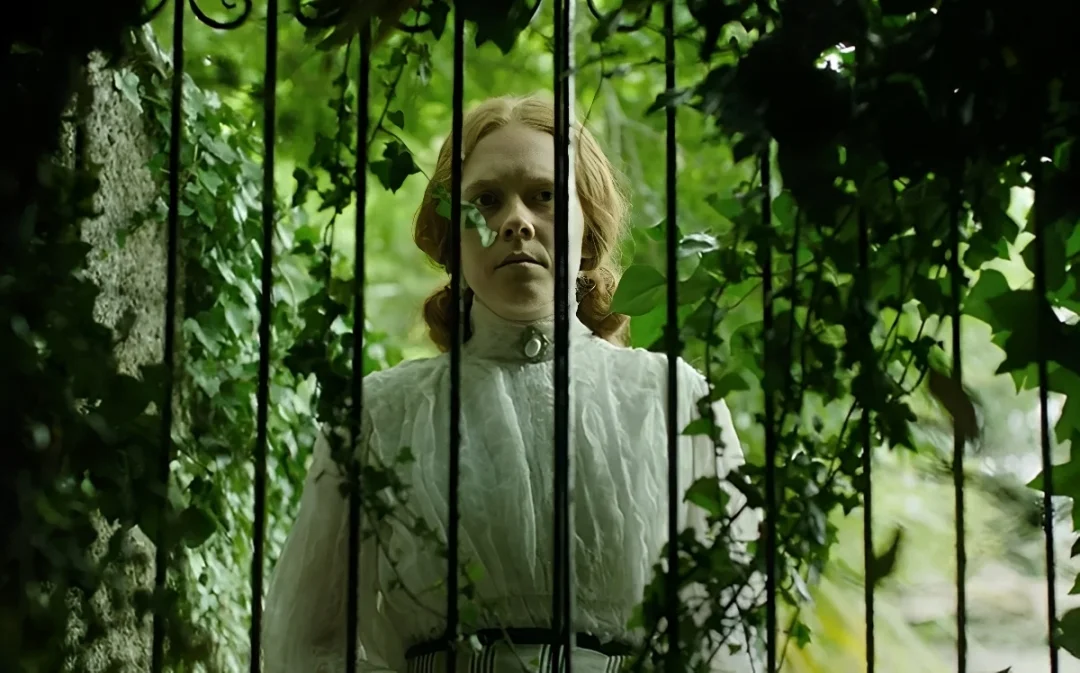
- Big Room: The big room represents both freedom plus confinement, creating a paradox that mirrors the narrator’s mental state. “It is a big, airy room, the whole floor nearly, with windows that look all ways.” Even though the room was large, she was still trapped inside it. The bars on the windows make it feel more like an asylum than a place for rest.
- The Scratched Floor & Torn Wallpaper: Signs that others may have suffered in the room before her. Suggests previous patients (likely women) were also driven mad by isolation. The room is not just a place—it represents how the narrator is trapped by her husband, society, and mental illness. The more she stays in it, the deeper she falls into madness.
The Journal – Third Symbol in The Yellow Wallpaper
The Hardship of Writing
The second most obvious symbol I found while in ‘The Yellow Wallpaper’ analysis was Jane’s journal. She used her journal as a tool to save herself from more psychological destruction (somewhat). In the entire story, the narrator multiple times talks about her journal and mentions that she has to hide her journal because her husband doesn’t like it when she writes.
I did write for a while in spite of ‘them’; but it does exhaust me a good deal-having to be so sly about it, or else meet with heavy opposition.
The Yellow Wallpaper
We have been here two weeks, and I haven’t felt like writing before, since that first day. I am sitting by the window now, up in this atrocious nursery, and there is nothing to hinder my writing as much as I please, save lack of strength.
The Yellow Wallpaper
The symbolism of the journal represents how Jane desperately wanted to share her inner thoughts and conflicts with someone. But, lacking a listener, she was forced to confide in her journal instead. As in the story, they say it’s because of stimulation, but the truth is they can’t see her feelings.
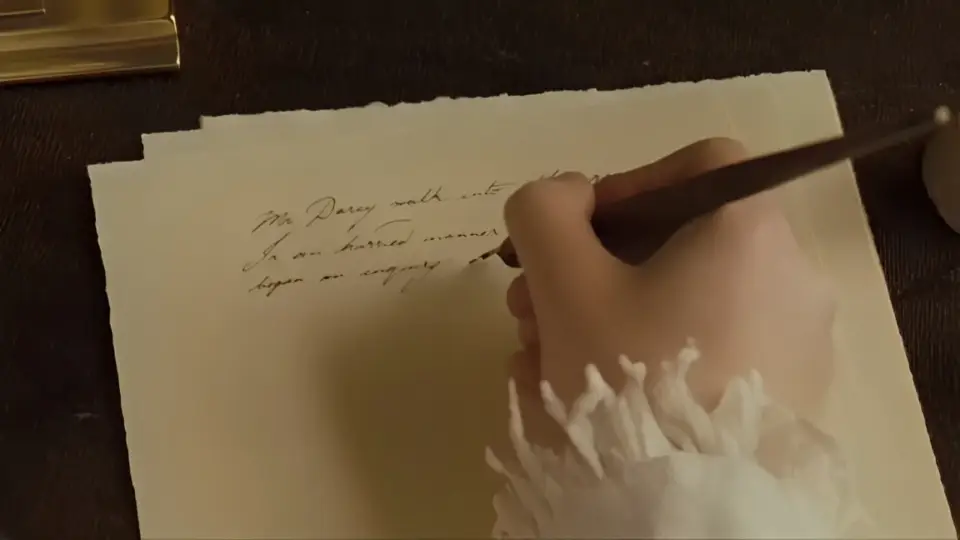
Having an Opinion and Concerns
Another interesting aspect of the journal’s symbolism is how it repeatedly emphasizes Jane’s struggle to have opinions, intelligence, and thoughts but is forced to suppress them. Throughout the story, it becomes clear that she is “chained,” both metaphorically and literally, unable to voice her true feelings.
For instance, at one point, Jane is confident about what is best for her own health, yet her assertions are dismissed and gaslighted.
So, I take phosphates or phosphites whichever it is, and tonics, and journeys, and air, and exercise, and am absolutely forbidden to “work” until I am well again. Personally, I disagree with their ideas. Personally, I believe that congenial work, with excitement and change, would do me good. But what is one to do?
The Yellow Wallpaper
“You know the place is doing you good,” he said, “and really, dear, I don’t care to renovate the house just for a three-month’ rental.” “Then do let us go downstairs,” I said, “there are such pretty rooms there.” Then he took me in his arms and called me a blessed little goose.
The Yellow Wallpaper
It is so discouraging not to have any advice and companionship about my work. When I get really well, John says we will ask Cousin Henry and Julia down for a long visit; but he says he would as soon put fireworks in my pillowcase as to let me have those stimulating people about now.
The Yellow Wallpaper
You can see she raised her concerns and choices, yet he continuously dismissed them. Using both emotional and logical arguments—not just on trivial matters, but even about herself. As a result, she restricted herself to the pages of her journal.
Through this, Gilman highlights the broader struggle for women’s rights—their desire and right to work, to have a voice, and to exist beyond the confines of domestic life. She critiques the traditional hunter-gatherer dynamic, where women were expected to remain passive collectors rather than active participants. “Writing”, in this context, symbolizes both a talent and an expression of autonomy.
The Yellow Wallpaper – Fourth Symbol in The Yellow Wallpaper
The Color of Wallpaper
Have you wondered till now, why yellow not any other colour? The colour yellow is either used to represent joy and happiness or caution, cowardice, and even illness. In the story, the narrator even describes the representation of the colour saying:
The color is repellant, almost revolting; a smouldering unclean yellow, strangely faded by the slow-turning sunlight. It is a dull yet lurid orange in some places, a sickly sulphur tint in others.
The Yellow Wallpaper
The yellow colour in the wallpaper describes the mental state of the narrator suffering from post-partum depression.

The Patterns on the Wallpaper
Gilman even didn’t let go of the smallest detail from one’s eye. Just like the colour the pattern also represents the story theme with the unusual appearance.
I know a little of the principle of design, and I know this thing was not arranged on any laws of radiation, or alternation, or repetition, or symmetry, or anything else that I ever heard of. It is repeated, of course, by the breadths, but not otherwise.
The Yellow Wallpaper
Looked at in one way each breadth stands alone, the bloated curves and flourishes – a kind of “debased Romanesque” with delirium tremens – go waddling up and down in isolated columns of fatuity. But, on the other hand, they connect diagonally, and the sprawling outlines run off in great slanting waves of optic horror, like a lot of wallowing seaweeds in full chase. The whole thing goes horizontally, too, at least it seems so.
The Yellow Wallpaper
Multiple Trapped Women Inside the Wallpaper
Near the climax, she believes there are many women behind the wallpaper, all trying to escape. This suggests that other women have been trapped by the same oppression.
I don’t like to look out of the windows even – there are so many of those creeping women, and they creep so fast. I wonder if they all come out of that wall-paper as I did?
The Yellow Wallpaper
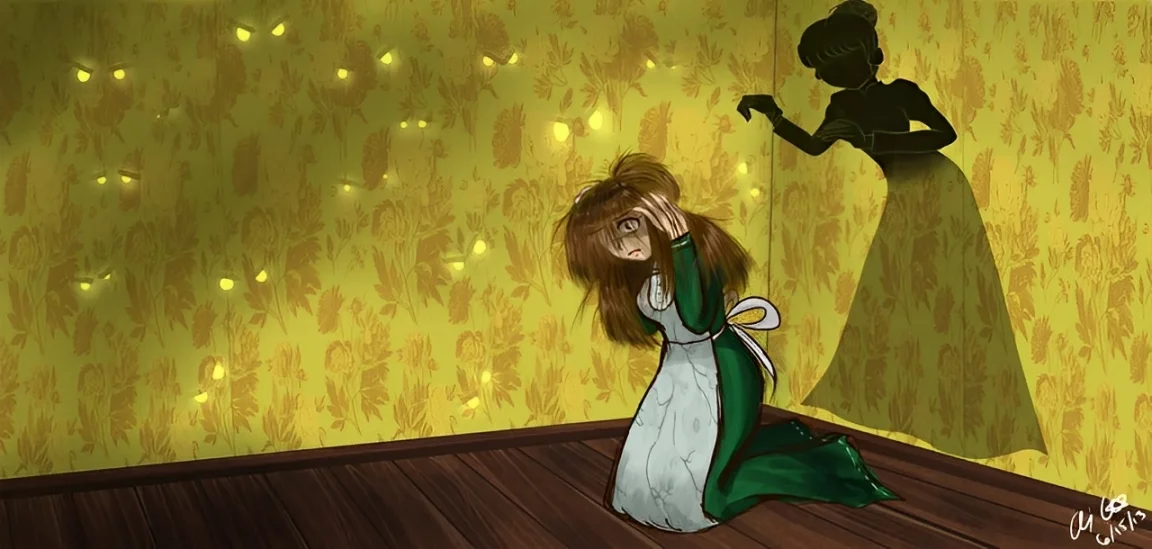
Analyzation of Themes
Charlotte Perkins Gilman’s The Yellow Wallpaper explores several powerful themes related to feminism, psychological horror, mental health, and societal oppression. Each theme plays a significant role in understanding the deeper messages of the story.
- Phycological Horror: The Yellow Wallpaper is a classic example of psychological horror, as it explores the narrator’s gradual descent into madness. Unlike traditional horror stories with supernatural elements, this story terrifies readers through the mind of the protagonist, making them experience her paranoia, hallucinations, and unnatural figures.
- Oppression of Women & Gender Roles: The story highlights the rigid gender roles of the 19th century, where women were treated as weak, dependent, and incapable of making their own decisions.
- Mental Illness & Gaslighting: The story is a psychological exploration of mental illness, particularly postpartum depression, and how society misunderstood and mistreated it, calling it just a “nervousness.”
Historical & Social Context of The Yellow Wallpaper – The Backstory
Now that we have explored The Yellow Wallpaper in-depth, it’s time to understand how this powerful short story connects to its author, Charlotte Perkins Gilman.
Charlotte married at a young age and gave birth to her daughter, Katharine Beecher Stetson, in 1885—who later became a renowned artist. Already prone to depression, Charlotte found that marriage and motherhood intensified her struggles. Many of her diary notes from the time of Katharine’s birth document her deepening depression.
Seeking treatment, she followed the advice of her husband and physician, Dr. Silas Weir Mitchell, a well-known American neurologist and novelist. He prescribed his infamous “rest cure,” which required the patient to remain on near-permanent bed rest, forbidding them from engaging in any intellectual or creative activities. Rather than alleviating Charlotte’s condition, the treatment only worsened it.
She later channelled this harrowing experience into The Yellow Wallpaper, using fiction to expose the dangers of the rest cure. Through the protagonist’s descent into madness, she warns others about the trauma inflicted by such a restrictive and oppressive treatment—one that proved even more damaging than the depression itself.
My Ratings and Recommendations for ‘The Yellow Wallpaper’
I’ve absolutely become a fan of Charlotte Perkins Gilman’s writing style—it’s pure genius. The way her narrator repeatedly echoes her husband’s suggestions, his name, his opinions, and his decisions perfectly reinforces the story’s core theme.
In my opinion, one of the most brilliant aspects of this short story is how it tells two narratives at once. On the surface, it seems to be about the woman trapped within the “cage” of the wallpaper, but in reality, it’s Jane herself who is confined within the walls of her own life.
The symbolism is on another level. I didn’t find a single detail to be wasteful or unnecessary—everything had a purpose. The author makes sure that every element she starts with plays a role in the story. I didn’t even cover this before, but she deliberately chose nothing like nothing else in that room but wallpaper, why? to highlight the symbolism of “walls” to symbolize oppression and Jane’s trapped existence. That choice alone speaks volumes.
As for the horror element, to be honest, I’m not a big reader of psychological horror, so I can’t say much about how it compares to others in the genre. It wasn’t exactly spooky or terrifying in the sense of horror, but maybe that’s just how psychological horror works—it creeps into your mind rather than relying on traditional scares. Either way, it was far from boring. And I love it for that.
The themes also stand out. At first, the story doesn’t seem overtly feminist, but by the end—when Jane becomes obsessed with freeing the woman in the wallpaper—you can clearly see the feminist undertones shining through.
Overall, I’d rate The Yellow Wallpaper a solid 4 out of 5 ⭐⭐⭐⭐.
